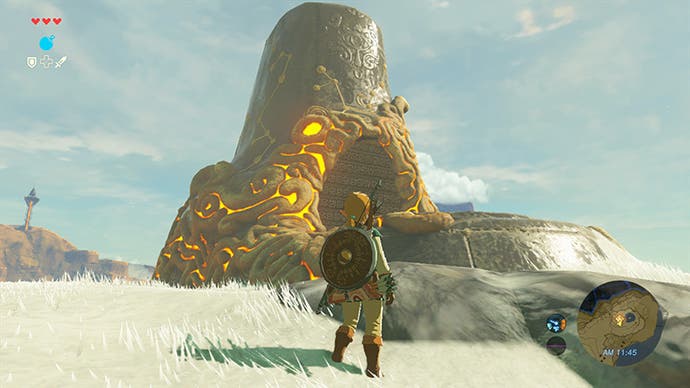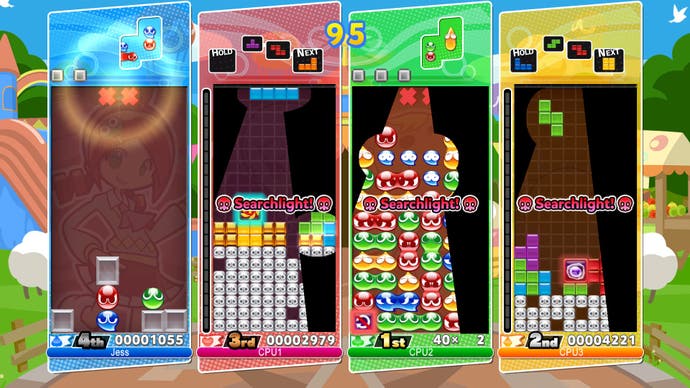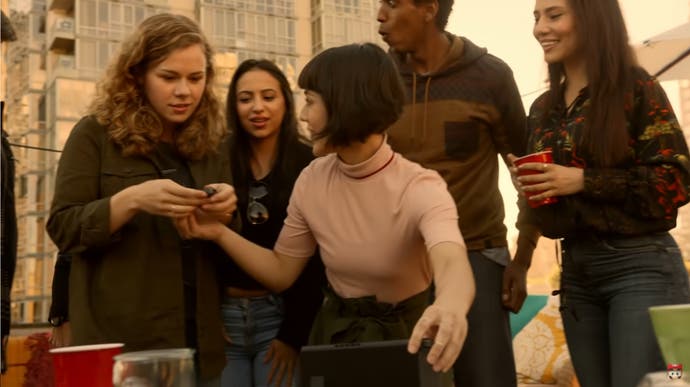The Switch at five: a console for every place
On the birthday of Nintendo's beautiful oddity, an ode to its strange powers.
When I first heard about the Nintendo Switch, I didn't understand it. I am notoriously thick, so when a rumour went around that the next Nintendo would be like the Wii U but inside out, I couldn't even picture it. Would we have to stand inside the tablet somehow? I saw wires tangling everywhere. Not fun.
Then came the lifestyle adverts. I still didn't understand it. People playing with Nintendo's new console on rooftop gatherings and in trendy restaurants with exposed brick on the walls?
After a while I saw my first Switch. Oddly enough I was in a trendy coffee shop with exposed brick on the walls. Martin Robinson showed me a bit of Zelda and I suddenly understood - or thought I did. Hey, I know this: it's the Vita! The power of an upright, as the old Dust Buster ads used to say, in your goddamned hand! I loved the Vita! So suddenly I was on board. 100 percent Team Switch. But guess what, I still didn't understand it. I just thought I did.
I only properly understood it a few months later. Apologies for over-sharing, but around the time the Switch came out I had a chemotherapy treatment - technically chemotherapy, but it was nowhere near as grueling as you're probably imagining - for my MS. I had a week in hospital and then a month locked up at home, unable to go outside or meet many people because my immune system was rebuilding itself. (What a unique experience, I thought to myself: a month locked up and unable to go out. This was long before Covid. I had no idea.)
Anyway, part through the week my Switch arrived. And then I understood. It's Nintendo, but Nintendo when you're lying in bed recovering from MS treatment. It's Nintendo, but Nintendo when you've eased yourself up onto your elbows for the first time, or when you've made it to the living room and immediately hit the couch. It's Hyrule and Mario Kart circuits anywhere in your house. And, of course, in the weeks that followed once I could wander around a bit, Nintendo thrown into your bag, on the train, the bus, on planes, outside under a tree, yes, on a rooftop gathering. Yes, in trendy restaurants with exposed brick.

These last two things came true I think because of the Switch's secret killer feature - that little flap on the back that means you can prop it on a table. That means you can set it up and show it off, and people who avoid video games like they're made of uranium might get curious and come over and have a look. For once the marketing was true: people were playing Switch everywhere, communally, and it was all sorts of people doing it. I have seen two big explosions of games over the last few years - one was Pokemon Go, obviously. The other was the Switch. People you knew but never knew to show an interest in games, and suddenly they were involved.
This is Switch, isn't it? The console for every place, a console for every kind of person. (This, incidentally, only underlines everything else that makes Nintendo's poor record with accessibility features so inexplicable.) Outside, inside, the Switch works. And for a console that I found so hard to understand initially, like everything Nintendo does you only need a few minutes with it and it just makes total sense.

(It's also hard to imagine any other console leading to a wonderful piece like this. A games machine that can mold itself to the specific contours of so many unique lives.)
There's more of course. The indie boom on the eShop, astonishing first-party stuff and the odd ingenious third-party game. Puyo Puyo Tetris. But then there's that special gift that all handheld consoles bestow: the fact that the screen you hold becomes a magical rockpool you look down into, a world in your hands, as rich and self-contained as the face of a wristwatch, as filled with its own sense of potency and mystery.
One last thing. I often think back to a great video game print ad from the glory days of magazines. Nokia N-Gage of all things. It would show a bus stop or a locker from a gym, starkly lit, a sense of the numinous. Here, the copy would read, here is where I killed the king, or Here is where I found the treasure. Words to that effect anyway.

What of this? Video games feel special, I think, because they are often geographical and architectural works of imagination that we play in geographical and architectural spaces. You might have memories of where you saw a film or where you were when you read a book, but only with a game, I think, do the memories of the environments where you played and the environments within the game get such a chance to mingle and collude. You are doubly inside with a game. Games and the spaces they are encountered in - look back through your own life and you will see them superimpose, you will spot them superpositioned.
And this is so much more potent with a console you can take anywhere. Inkopolis Square in bed. Hyrule while you wait at the doctor's. Rooster's coffee shop while you're inside a Starbucks. What does Nintendo do? It spots harmonies and connection points that nobody else has really spotted, or really thought about. And then it amplifies. And it puts in the effort to make it all feel effortless. Five years! Five years.


